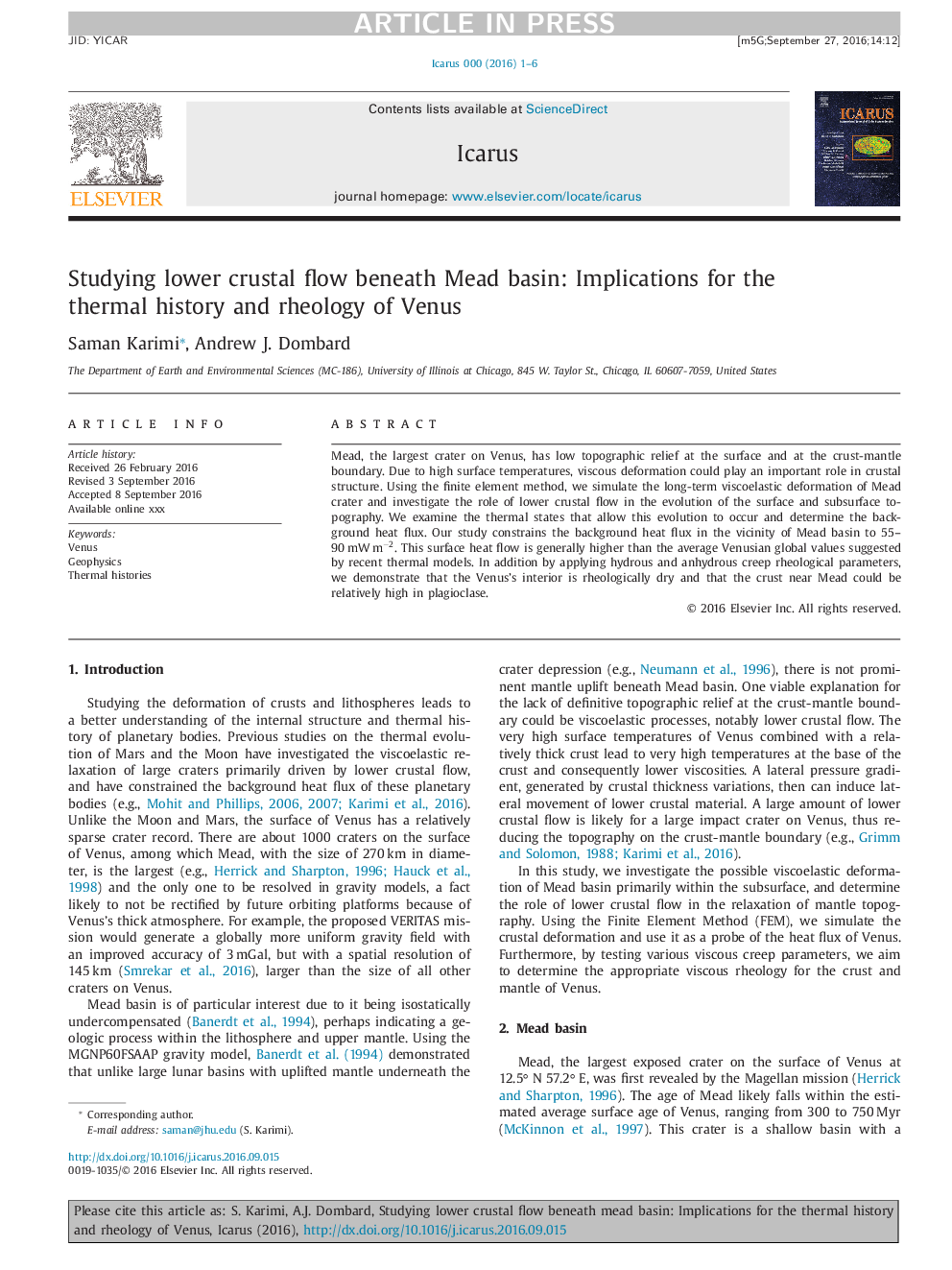| Article ID | Journal | Published Year | Pages | File Type |
|---|---|---|---|---|
| 5487400 | Icarus | 2017 | 6 Pages |
Abstract
Mead, the largest crater on Venus, has low topographic relief at the surface and at the crust-mantle boundary. Due to high surface temperatures, viscous deformation could play an important role in crustal structure. Using the finite element method, we simulate the long-term viscoelastic deformation of Mead crater and investigate the role of lower crustal flow in the evolution of the surface and subsurface topography. We examine the thermal states that allow this evolution to occur and determine the background heat flux. Our study constrains the background heat flux in the vicinity of Mead basin to 55-90Â mWÂ mâ2. This surface heat flow is generally higher than the average Venusian global values suggested by recent thermal models. In addition by applying hydrous and anhydrous creep rheological parameters, we demonstrate that the Venus's interior is rheologically dry and that the crust near Mead could be relatively high in plagioclase.
Keywords
Related Topics
Physical Sciences and Engineering
Earth and Planetary Sciences
Space and Planetary Science
Authors
Saman Karimi, Andrew J. Dombard,
